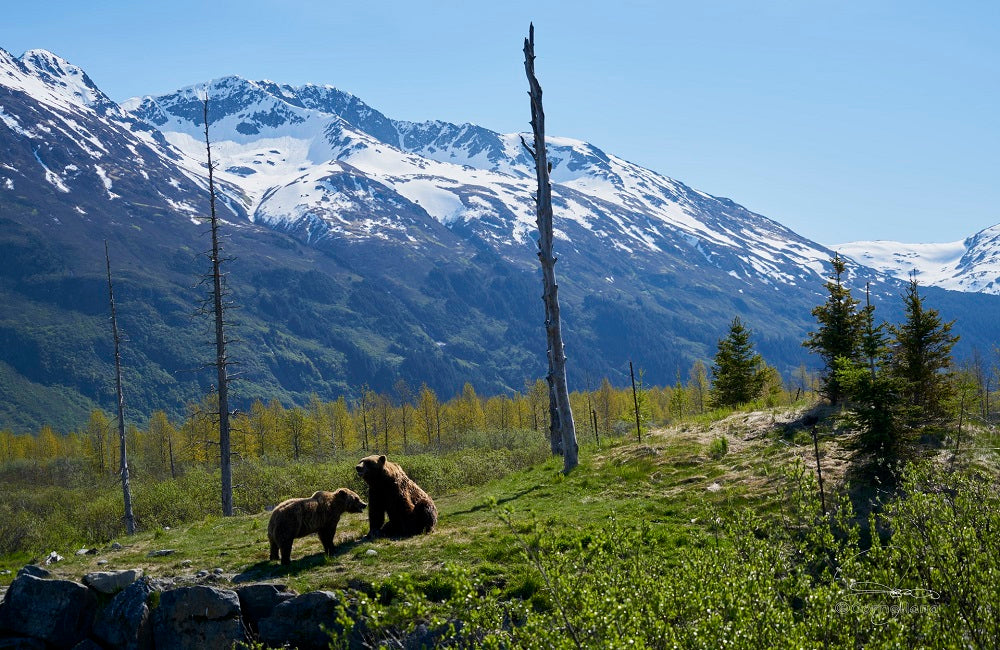credit: Coghlan's
What is a bear bell?
A bear bell is a small 1.5-inch bell with either a thick velcro strap or a carabiner used for attachment. You can attach it to the outside your backpack, waist belt or any other external piece of gear.
How are bear bells DESIGNED to work?
Contrary to popular belief, bear bells are not meant to scare a bear. They are designed to warn a bear (and other animals - cougars, etc) of your presence, so you don't accidentally startle them. It's this surprise meeting between a hiker and a bear that can lead to a tense standoff or, potentially, an attack. As your body moves while hiking, the bell will inevitably jingle loud enough that anyone or anything in the immediate area can hear it.
Do bear bells ACTUALLY work?
People might be comforted by having a bear bell on their pack, but there are arguments made that challenge their effectiveness. Some say they do work; others say they don't work.
Yes-they-do-work: Supporters of bear bells point to a 1982 study on bear and hiker interactions in Glacier National Park, which found that hikers who wore bear bells were less likely to be charged by a grizzly bear.
No-they-don't-work: A more recent study by U.S. Geological Survey scientist, Tom Smith, suggests that bears in the wild ignore bear bells, treating them as they would a bird or some other background noise. Therefore, negating the entire purpose of carrying it all.
They-make-things-worse: If bears do hear the bells, some bear experts like Dr. Stephen Herrero believe the bear bells may actually attract bears who are curious about the strange jingling sound.
With conflicting results and opinions, we really don't know for sure if bear bells actually work or not.
Can you "turn off" a bear bell?
Yes. Most bells come with some sort of silencer option so you can turn off the jingling when you no longer need it. The silencer is usually a magnet that will hold the rattling bead in place.
Where to find bear bells?
There are a few different brands of bear bells. They all make a similar jingle-like sound and are all inexpensive (under $15). The three most popular bear bells are made by Coghlan, Frontiersman, and Nakabayashi.
Final Considerations
1. The constant jingling of the bell as you walk can be super noisy and unpleasant for both you and your hiking crew.
2. They could scare off other wildlife sightings besides bears (for better, or worse!).
If you are hoping to catch a glimpse of moose in Maine, you may be out of luck if you are wearing a bear bell. Before you purchase one and slap it on your pack, you have to ask yourself if the peace of mind you get from bear bell is really worth it. With their effectiveness still unclear, the use of a bear bell becomes personal preference.

Other Bear Prevention Methods
If you are unsure about bear bells but still want protection from bears there are other more, probably more effective, methods that you can use.
Talking/Singing: One the cheapest and easiest bear deterrents is talking or singing while you walk. Bears are thought to associate voices with humans and they often will take cover when they hear you coming. This, of course, might get exhausting though!
Bear horns: A bear horn is a mini air horn that delivers a shockingly loud sound that'll startle a bear within a ½ mile radius.
Bear whistles: The shrill sound of a whistle can scare off a bear, but you need to be judicious in their use. Blowing a whistle, especially repeatedly, in the woods can be mistaken for a distress signal.
Bear canisters: Bear canisters store your food and scented items keeping them secure from nosey bears. They are very effective, which is why they are required in high bear population areas like the Sierra Nevadas. Though inherently bulky and heavy, there are some relatively lightweight bear canisters.
Locksak Opsak: The Opsak is a small sack made of a material that blocks the scent of your food, soaps, and deodorants. It is generally used in conjunction with your bear canister.
Bear bagging: The cheapest way to safely store your food and scented items is using a technique called bear bagging which is simply a way to hang your food in a tree so a bear can't reach it.
Bear spray: Instead of trying to avoid all bear encounters, some people prefer to carry bear spray, which is a concentrated pepper spray that will fend off a charging bear.






 650-Calorie Fuel
650-Calorie Fuel